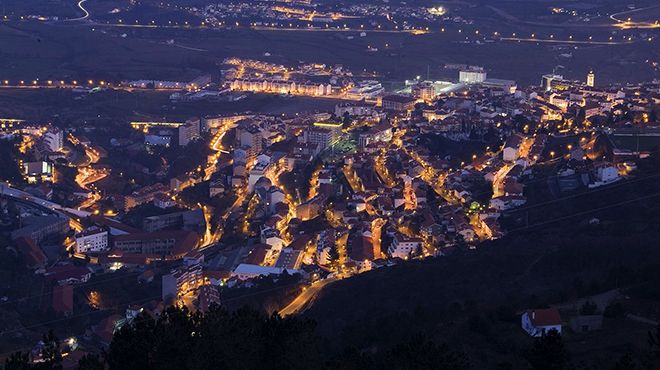Covilhã

Towns and Villages
Lying among rivers and mountains, the city of Covilhã is one of the gateways to the Serra da Estrela.
The original inhabitants of the land were Lusitanian shepherds. Covilhã was reconquered from the Moors by King Dom Sancho I, who built city walls to protect it. It became a strategic point in the Middle Ages, especially in the reign of Dom Dinis, who set about reinforcing the defence of the territory.
The town was granted royal status by Dom Manuel, who gave it a new charter in 1510, and it was also a land of discoverers. Prince Henry the Navigator was given the title Lord of Covilhã by his father, King Dom João I, after conquering Ceuta in 1415.
It was the birthplace of Pêro da Covilhã, the explorer sent to the Orient by King Dom João II, and whose information helped Vasco da Gama to discover the sea route to India.
One of Covilhã's claims to fame is the art of making woollen goods. This began in the time of Dom Sancho I, and was developed by the Jewish community that settled here at that time, where they remained until the 15th century. The textile industry, which produced all the uniforms for the Portuguese army during the reign of Dom João V, was given a new boost when the Marquis of Pombal established the Royal Cloth Factory here, making it into the country's largest centre for the production of woollen goods. Due to ecomomic growth that followed, Covilhã was raised to the status of a city in 1870.
A visit to Covilhã's historic heritage should not omit the old Judiaria (Jewish Quarter), with its narrow streets and Manueline windows, the Chapel of São Martinho, the Chapel of Santa Cruz and the Wool Museum.
In Covilhã and surrounding areas, discover the Land of Castles and Historical Villages, the Wool Route, the Old Judiarias Route, and the Serra da Estrela Nature Reserve, by taking one of the itineraries that show you the region's natural and cultural heritage. Find us on the Covilhã Council website.




 Explore
Explore 
 Remember and Share
Remember and Share 


